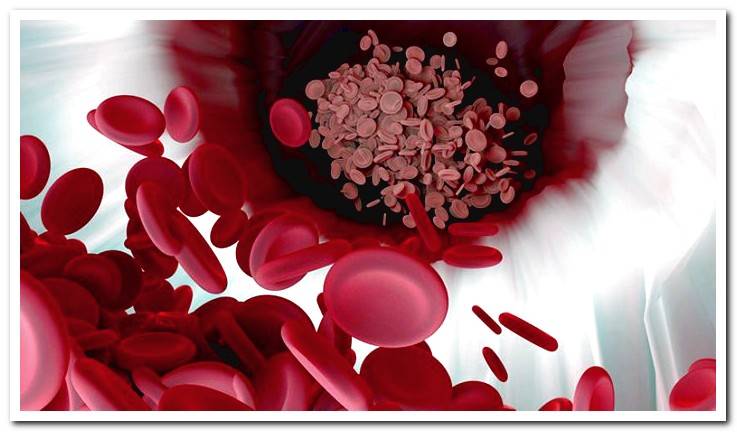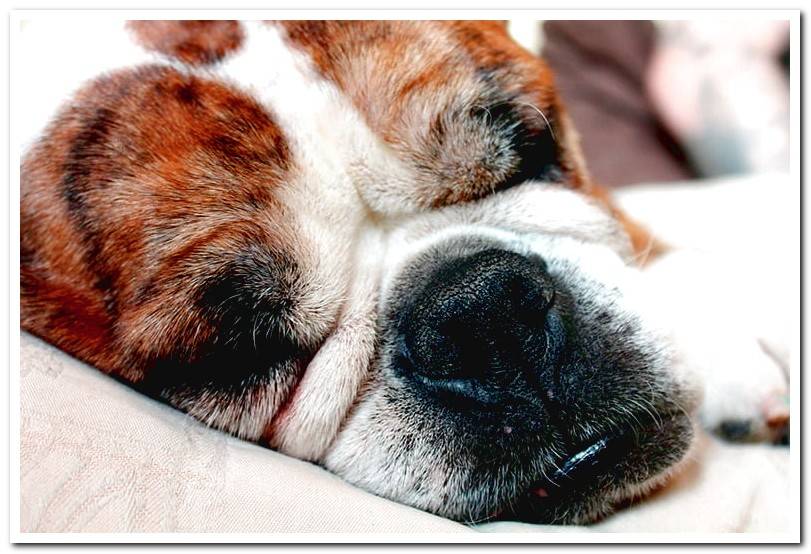
Like humans, dogs can also suffer from “high cholesterol.” In animals this alteration is known as hyperlipidemia, and it must be controlled and treated as soon as possible to avoid health problems in our pet.
High-fat diets can be the cause of hyperlipidemia, but this alteration can also be secondary to important diseases such as diabetes, hypothyroidism, liver problems or obesity, among others.
Hyperlipidemia is detected with a simple blood test and its treatment can range from a simple diet change to the administration of different medications depending on its cause. If you want to know more about this alteration, we explain below what are its possible causes and forms of treatment.
Index of contents
- 1 What is canine hyperlipidemia?
- 2 What types of hyperlipidemia are there?
- 3 What symptoms can we observe in dogs with high cholesterol?
- 4 Canine hyperlipidemia diagnosis
- 5 How is canine hyperlipidemia treated?
- 6 Can hyperlipidemia be prevented?
What is canine hyperlipidemia?
Canine hyperlipidemia is defined as an increase in the normal amount of lipids (fats) present in the blood of a fasted dog (who has at least 12 hours without eating). Hyperlipidemia includes hypercholesterolemia (high cholesterol) and hypertriglyceridemia (high triglycerides).
It’s important to put attention on hyperlipidemia is only considered if the animal that has fasted for at least 12 hours it has a blood lipid concentration higher than the normal range for its species.
In a healthy dog, the absorption of fat occurs within 30-60 minutes after eating a meal, producing a physiological increase in blood cholesterol and triglyceride levels that lasts between 3 and 10 hours. This “hyperlipidemia” is natural and not related to any health problem.
However, if the fats are not absorbed correctly because there is some alteration, the levels of lipids in the blood can remain elevated for more than 12 hours. In this case, we would talk about a dog with hyperlipidemia and the possible causes of this alteration would have to be evaluated to establish its correct treatment.
What types of hyperlipidemia are there?
Hyperlipidemia can be primary or secondary, depending on its cause.
- Primary hyperlipidemia: There is no underlying disease causing the alteration of blood lipid levels. This type of hyperlipidemia is associated with certain breeds such as the Miniature Schnauzer, Doberman pinchers, and Rottweilers.
- Secondary hyperlipidemia: It is the most common form of hyperlipidemia in dogs that do not belong to the breeds mentioned above, and is a secondary alteration to other pathologies such as diabetes mellitus, hypothyroidism, hyperadrenocorticism, liver disease, nephrotic syndrome, pancreatitis, or obesity. That is, dogs that suffer from any of these pathologies may have increased blood lipid levels as a consequence of that underlying disease.

What symptoms can we observe in dogs with high cholesterol?
The symptoms of canine hyperlipidemia depend primarily on what causes it. Dogs with primary hyperlipidemia do not usually have any associated symptoms Although changes such as abdominal pain, vomiting, diarrhea, seizures or lumps of fat on the skin (lipomas) may appear.
If it’s hyperlipidemia secondary, in addition to the symptoms we have mentioned for primary hyperlipidemia, we can see specific signs of the underlying disease.
- Mellitus diabetes: Signs include increased appetite, increased water intake, increased urine volume, and weight loss.
- Hypothyroidism: The symptoms that can be observed are lack of activity (lethargy), heat seeking and dermatological changes (hair loss and darkening of the skin).
- Hyperadrenocorticism: Signs include increased appetite, increased water consumption, increased urine volume, dermatological abnormalities (loss of hair and thin skin), and a pendular abdomen.
- Liver disease: The observed symptoms can be anorexia, weight loss and jaundice (yellow discoloration of the mucosa).
- Nephrotic syndrome: Signs include edema of the extremities, accumulation of fluid in the abdomen (ascites).
- Pancreatitis: The symptoms it includes are abdominal pain, vomiting, diarrhea and anorexia.
Canine hyperlipidemia diagnosis
The diagnosis of hyperlipidemia is very simple, since detected with a blood test performed on the dog after a minimum of 12 hours fasting.
Once hyperlipidemia is detected, the challenge is to carry out all the necessary tests to determine the cause of this alteration.
If it is one of the predisposed breeds (Miniature Schnauzer, Doberman pinschers, Rottweiler) and does not present any symptoms, it can be determined that it will almost certainly be a primary hyperlipidemia and it will not be necessary to carry out additional tests.
However, in the rest of the races or if there are any associated symptoms, the presence of the underlying diseases mentioned above as possible causes of secondary hyperlipidemia should be ruled out.
How is canine hyperlipidemia treated?
If it is a primary hyperlipidemia, as a basis for its treatment a change of diet to a low-fat diet is established (the diet must contain <10% fat). At 4-6 weeks the effectiveness of the diet is evaluated, and if the diet has not been able to control hyperlipemia, it will be necessary to administer supplements or additional medications such as omega-3 fatty acids, Gemfibrozil, Clofibrate and niacin.
In cases of secondary hyperlipidemia, establishing specific treatment for the underlying disease usually corrects blood lipid values. However, in some cases, it is also necessary to establish a diet change and specific medication to decrease lipid levels.
Can hyperlipidemia be prevented?
If your dog is one of the breeds predisposed to suffer primary hyperlipidemia, we recommend that you follow the following tips to avoid the problems related to this alteration.
- Try to keep your dog within its optimal weight; For this, it controls the amount of fat in the diet you choose to feed it and avoids human food, especially those that contain fat.
- Also, exercising regularly encourages fat “burning” and will help you maintain your weight.
- Finally, it is recommended that you visit your vet at least once a year for a review and to detect any health problem as soon as possible.
